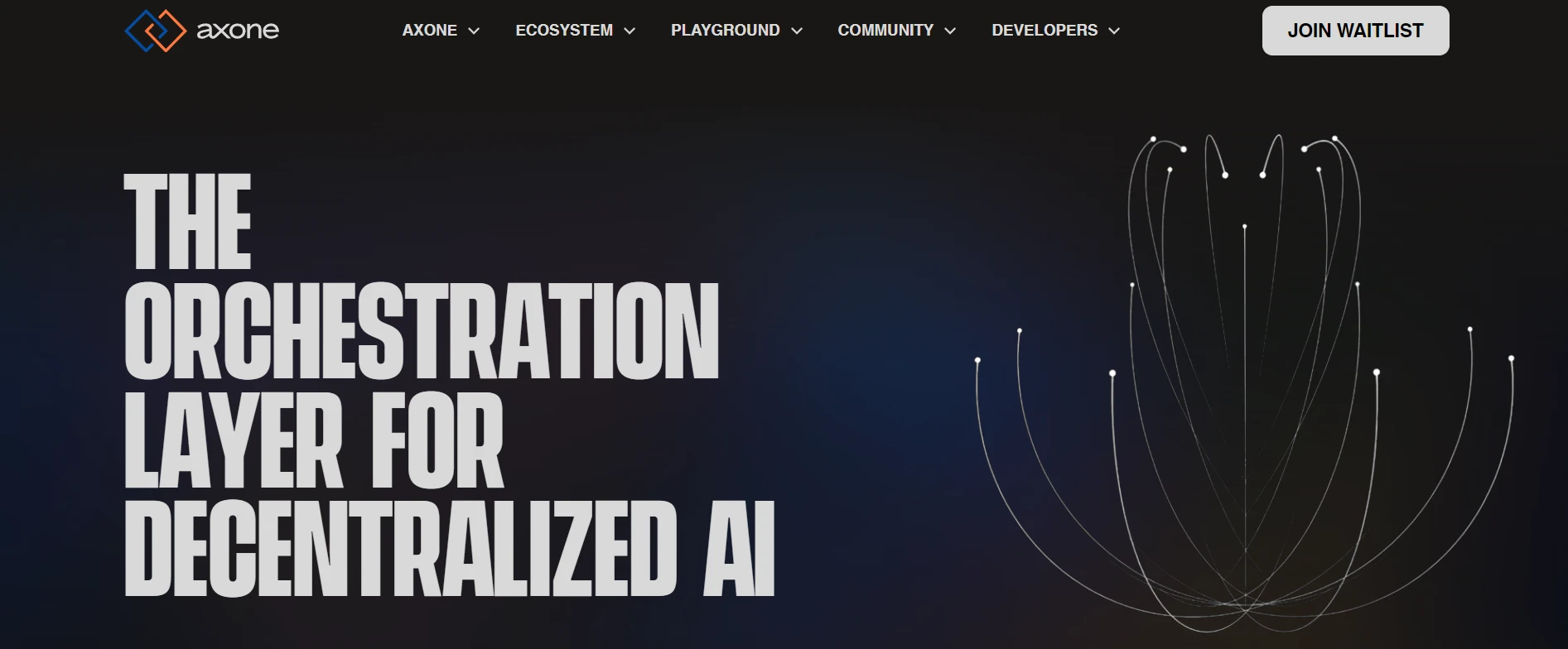Modern artificial intelligence (AI) technologies require significant computational power, vast volumes of data, and precise models for their creation. However, access to these resources is often restricted to large corporations, making it challenging for smaller players to participate. Axone disrupts this paradigm by offering a decentralized platform that simplifies the sharing, monetization, and interaction of AI resources. With its unique approach, Axone bridges the gap between developers, businesses, and researchers, creating new opportunities for collaboration and innovation.
- Introduction to Axone
- Key Features and Advantages
- Technical Architecture
- Applications in AI
- Community and Ecosystem
- Conclusion

Introduction to Axone
Axone is an advanced blockchain platform aimed at solving critical challenges related to the development and deployment of artificial intelligence (AI). The project introduces a new approach to organizing collaboration in AI, uniting developers, companies, and researchers on a decentralized platform. Axone’s primary mission is to create an environment where users can securely share data, models, and computational resources, breaking down barriers to access these critical assets.
Axone leverages blockchain technology to ensure transparency, trust, and data immutability. The project’s compatibility with various infrastructures and models provides flexibility and scalability, making it an ideal solution for industries such as healthcare, finance, and manufacturing.
"We are creating an ecosystem where artificial intelligence becomes accessible to everyone," emphasizes the Axone development team in their technical documentation.
The Axone system is designed to simplify resource sharing and workflow coordination. Ecosystem participants can create custom interaction rules, define monetization conditions, and easily integrate with other platforms. This makes Axone a tool capable of accelerating AI adoption and unlocking new opportunities for small and large market players alike.
Key Features and Advantages
Axone offers a unique set of features that distinguish it from other blockchain platforms. These capabilities are designed to address key challenges in coordinating AI processes and monetizing resources. The platform provides users with flexible tools for interaction and management, creating an environment where data and models are readily accessible for sharing and collaboration.
- Decentralized Management: Eliminating intermediaries enhances trust and reduces risks of misuse.
- Interoperability: Compatibility with various data types, models, and infrastructures makes Axone a universal solution for diverse industries.
- Resource Monetization: The ability to set prices and usage conditions for resources fosters the development of new business models.
- Transparency and Security: Blockchain records all transactions, ensuring their immutability and accountability.
- Flexible Configuration: Users can create custom rules and processes tailored to their specific needs.
These advantages make Axone not only a powerful tool for AI development and deployment but also a platform that encourages open collaboration among market participants. The Axone team emphasizes:
This vision underscores the platform’s vital role in shaping the future of AI technologies.
Technical Architecture
Axone is built on Cosmos SDK and uses the CometBFT consensus, ensuring high network performance and security. The blockchain supports smart contracts, enabling the creation of customized rules, governance mechanisms, and business models to align interests among participants and develop useful decentralized applications.
The main components of Axone’s architecture include:
| Component | Description |
|---|---|
| Zones | Conceptual frameworks defined by a set of rules where recognized digital resources comply with these rules, taking into account related agreements. |
| Dataverse | An ever-expanding universe consisting of all digital resources, such as datasets, and digital services, like infrastructure and processing services, registered on the Axone blockchain. |
| Ontology | A system for accurately representing and interpreting various concepts, ensuring effective understanding and coordination between resources. |
These key components form the foundation of Axone’s architecture, providing flexibility and scalability. By combining zones, dataverse, and ontology, the platform effectively integrates data and resources, creating unique conditions for collaboration in the AI domain.
Applications in AI
Axone provides a platform for startups, tech companies, and developers, enabling them to create new applications and innovations in the AI field. The protocol supports collaborative orchestration of AI workflows, compatible with any data, models, or infrastructure. Users can share data, algorithms, storage, computational resources, and APIs both on-chain and off-chain, under any conditions.
Examples of Axone's applications in AI include:
- Collaborative model training: Organizations can pool their data and computational resources to jointly develop and train AI models, accelerating the process and reducing costs.
- Data sharing: The platform enables secure and efficient data exchange between participants, ensuring compliance with agreed conditions and access rules.
- Algorithm monetization: Developers can offer their algorithms and models on the platform, setting their own terms of use and pricing, fostering innovation and ecosystem growth.
Community and Ecosystem
The success of any blockchain project largely depends on the activity of its community, and Axone is no exception. The project team actively develops the ecosystem, providing users with tools for developing and testing solutions. The Axone community includes developers, researchers, and business users who actively contribute to the platform's growth.
Axone supports open-source code, promoting transparency and fostering collaboration. Users can participate in discussions on platforms like GitHub and Discord, where they share experiences, propose improvements, and test new features. Additionally, the project actively collaborates with universities and research institutes, supporting educational initiatives and organizing events to exchange knowledge.
To increase participant engagement, Axone's developers have introduced incentive programs, such as grants and rewards for contributions to the ecosystem's development.
"We aim to create a community where every participant feels valued," notes the project team.
This approach helps foster a favorable environment for innovation and strengthens trust in the platform.
Conclusion
Axone represents an innovative approach to collaboration in AI, offering a decentralized platform for sharing and monetizing digital resources. With its flexibility, security, and interoperability, Axone has the potential to become a key player in advancing AI technologies and encouraging new forms of collaboration and innovation.




